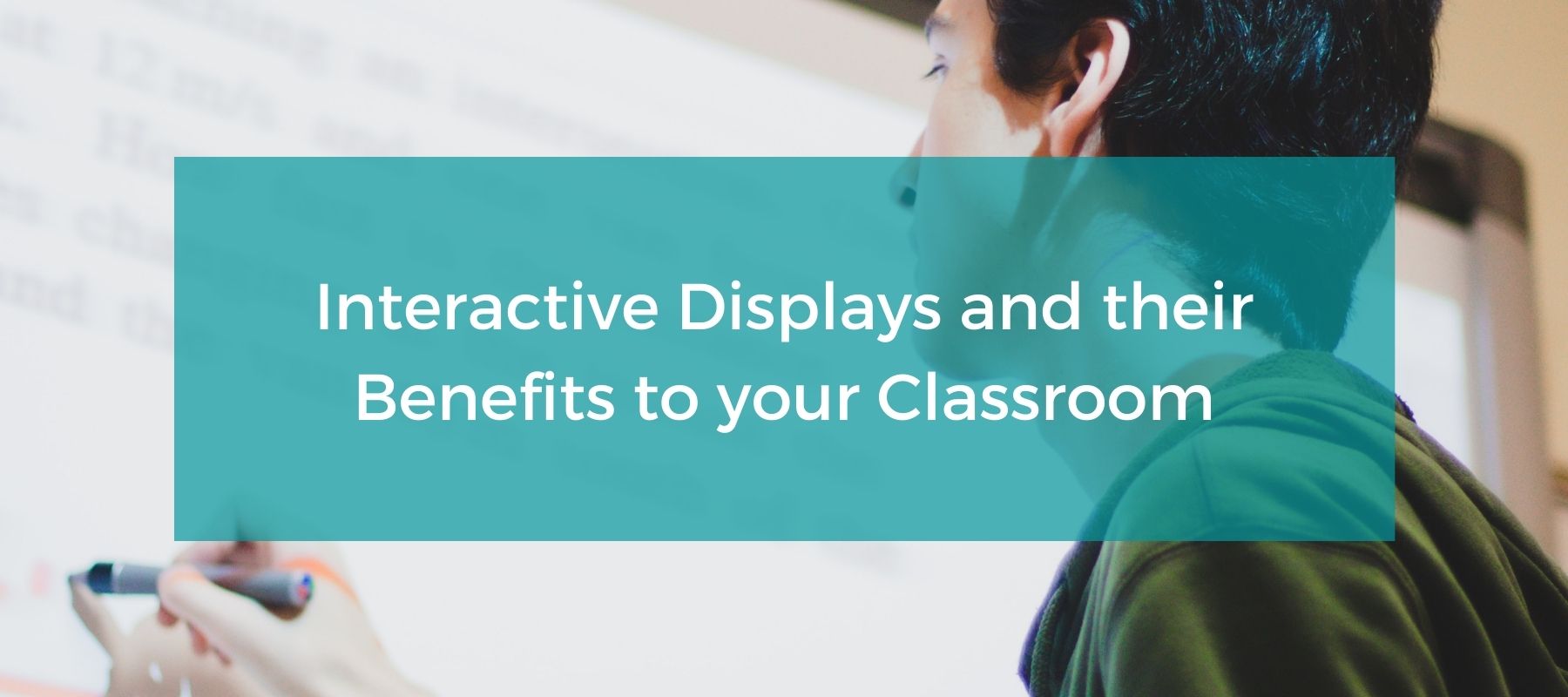
Interactive Flat Panel Displays and their Benefits to your Classroom
Modern classrooms are transforming with the help of digital tools designed to boost student engagement and enhance learning outcomes. Among these tools, interactive flat panel displays (IFPDs) have become a game-changer. These digital signage displays combine touchscreen technology with classroom-friendly software, helping educators create more dynamic, immersive, and collaborative learning environments.
Teaching becomes more interactive, visual, and fun with an interactive display. Educators can present lessons, annotate in real-time, and involve students in ways that traditional boards simply can’t match.
Milestones in Classroom Technology
Technology in the classroom has come a long way. What started as innovative decades ago has evolved into essential tools still used in today’s digital learning spaces.
-
1971: The University of Illinois introduced the PLATO IV terminal—the first touchscreen computer designed for education.
-
1993: Apple launched the Newton MessagePad 100, a PDA with handwriting recognition and stylus support.
-
1999: SMART Technologies introduced the SMART Board, an interactive whiteboard that allowed users to control projected content with a pen.
-
2007: Apple’s iPhone and App Store revolutionized touch-based user interfaces.
-
2007: Microsoft introduced the Surface, a touch-sensitive tabletop device.
-
2010: Apple released the iPad, marking the rise of tablets in classrooms. Competitors like Samsung, Microsoft, and Amazon soon followed.
These milestones paved the way for the interactive flat-panel displays now becoming a staple in modern education.
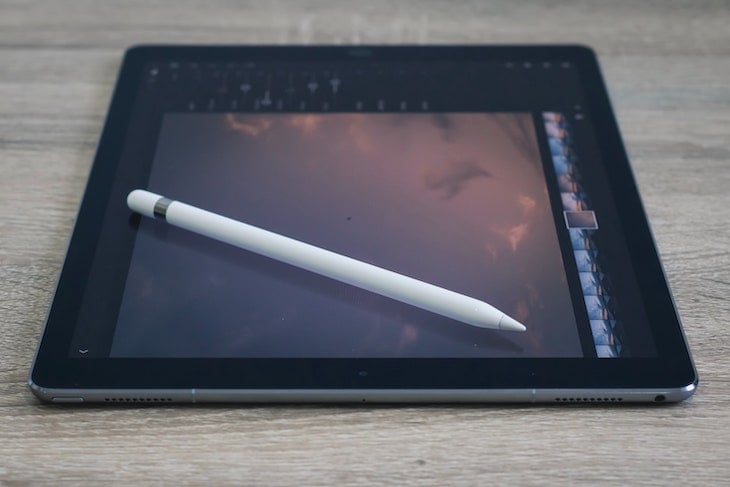
Benefits of Interactive Displays in the Classroom
Let's look at the benefits of having interactive digital signage software displays in your classrooms.
Increased Interaction & Collaboration
Interactive displays allow students to engage directly with lesson content. Teachers can encourage group participation through collaborative problem-solving and brainstorming sessions, with multiple students using the display simultaneously. This fosters active learning and makes lessons more dynamic and inclusive.
Better Student Engagement
Students are more likely to participate in classes that use interactive displays. These tools hold attention better than traditional whiteboards, and students show greater motivation and cooperation. Whether it’s elementary or higher education, engagement levels improve.
Enhanced Support for All Learning Styles
IFPDs cater to every type of learner:
-
Kinesthetic learners benefit from physically interacting with content on the screen.
-
Visual and auditory learners gain from videos and multimedia presentations.
-
Reading and writing learners can review notes captured on-screen and shared after class.
-
Students with special needs benefit from features like text-to-speech, captioning, and accessibility tools.
Even physical impairments are less of a barrier with touchscreens. For example, students with arthritis may find it easier to use a stylus than a keyboard or mouse.
Feedback
Interactive displays offer immediate visual feedback that enhances the learning process. Students can track their progress and receive on-the-spot corrections. This helps improve comprehension and supports more efficient learning.
Classroom Management
These displays help teachers maintain order and focus. Engaging visuals and interactive content reduce distractions, while built-in tools like timers, noise-level meters, and animated activities make it easier to manage the classroom efficiently.
Communication
When not in use for lessons, displays can still serve a purpose. IT teams can push out school-wide alerts, announcements, or reminders. In emergencies, interactive displays can quickly share critical messages. Some systems, like Rise Vision, allow schools to display content even when the board is idle.
Ease of Use
Interactive displays are built with usability in mind. They require little to no training—teachers can dive in after learning the included software tools. Unlike traditional setups, there’s no need to juggle multiple devices or programs.
Speed
Teachers benefit from the speed of digital workflows. Touch navigation and stylus precision improve accuracy, and lesson interruptions caused by misclicks or tech issues are minimized. The efficiency of instruction improves without sacrificing content quality.
Cleanliness
IFPDs feature smudge-resistant glass that’s easy to clean and maintain. Teachers often involve students in using the boards, and after each session, cleaning is quick and simple—keeping the classroom hygienic and ready for the next lesson.
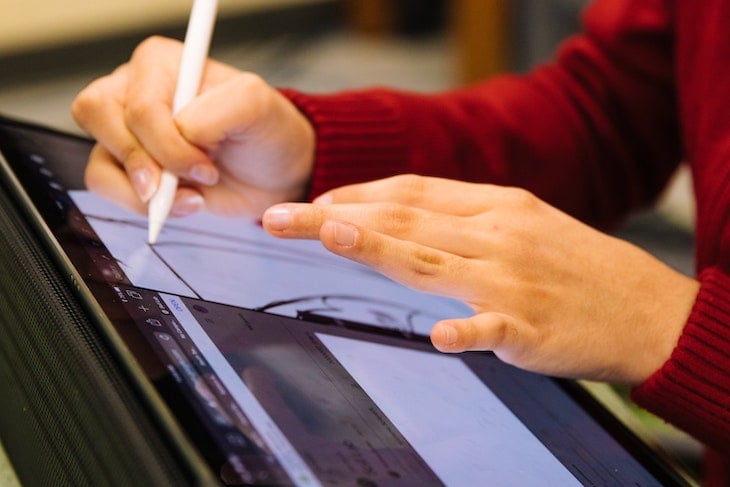 Where do Touchscreen Devices Find their Way into Classrooms?
Where do Touchscreen Devices Find their Way into Classrooms?
Interactive flat panel displays are now widely adopted across educational institutions. Here's a breakdown of the leading brands and their unique features:
SMART Boards
SMART Boards were pioneers in interactive education technology and remain among the most trusted brands today. Their displays are known for durability, multi-touch functionality, and the SMART Notebook software suite. Features like SMART Ink and an embedded Android-based iQ OS support intuitive annotation, cloud integration, and quick access for multiple users.
Promethean
Promethean displays are designed for multi-user collaboration and come with dual-handed gesture support. They include licenses for ActivInspire and Classflow—two robust software solutions for educators. Their Whiteboard app enables true annotation with layered text, and the Promethean Titanium model includes built-in Android OS capabilities.
Newline Interactive Displays
Newline offers crystal-clear displays with wireless content sharing and built-in speakers. Their optically bonded screens improve viewing angles and reduce glare, making them ideal for group learning. Two-way screen control adds flexibility in lesson delivery.
Clear Touch
Clear Touch provides interactive displays with a variety of training and support services. Their products are available in multiple sizes and configurations, tailored to meet the diverse needs of modern classrooms.
ViewSonic
Known for both projectors and interactive ViewBoards, ViewSonic serves classrooms, conference rooms, and large venues. Their displays support educational apps and tools that simplify lesson planning and student collaboration.
TouchView
TouchView's displays feature anti-glare protective glass, magnetic annotation pens, and Android OS integration. Their 4K screens support 20 simultaneous touch points, making them suitable for interactive group work.
BenQ
BenQ offers educational displays designed for multitasking. Teachers can run two apps side-by-side and access cloud storage via NFC cards. This simplifies the process of loading lesson materials and switching between resources mid-lesson.
Avocor
Avocor stands out for its flexibility and strong partnerships with brands like Microsoft, Google, and Zoom. Their displays are ideal for collaborative environments and support high-resolution whiteboarding, built-in cameras, and inking precision.
Is the Learning Environment Improved with Interactive Flat Panel Displays?
Absolutely. Classrooms equipped with interactive displays are more engaging, collaborative, and inclusive. These free digital signage tools help teachers create active learning experiences while supporting every type of learner. They simplify lesson planning, improve communication, and require minimal training to use.
As schools move toward modern, digital-first classrooms, the question isn’t whether to adopt interactive displays—it’s how quickly they can be implemented.
Interactive displays are one of the technologies that provide benefits to your classroom. To learn about other tools click here.
More From Our Blog
-

Screen Sharing for Workplace Collaboration | Rise Vision
Screen-sharing technology has transformed how teams communicate and work together in real-time, regardless of their location. It can make presentations more engaging, support remote work, and speed[…]
Read More -
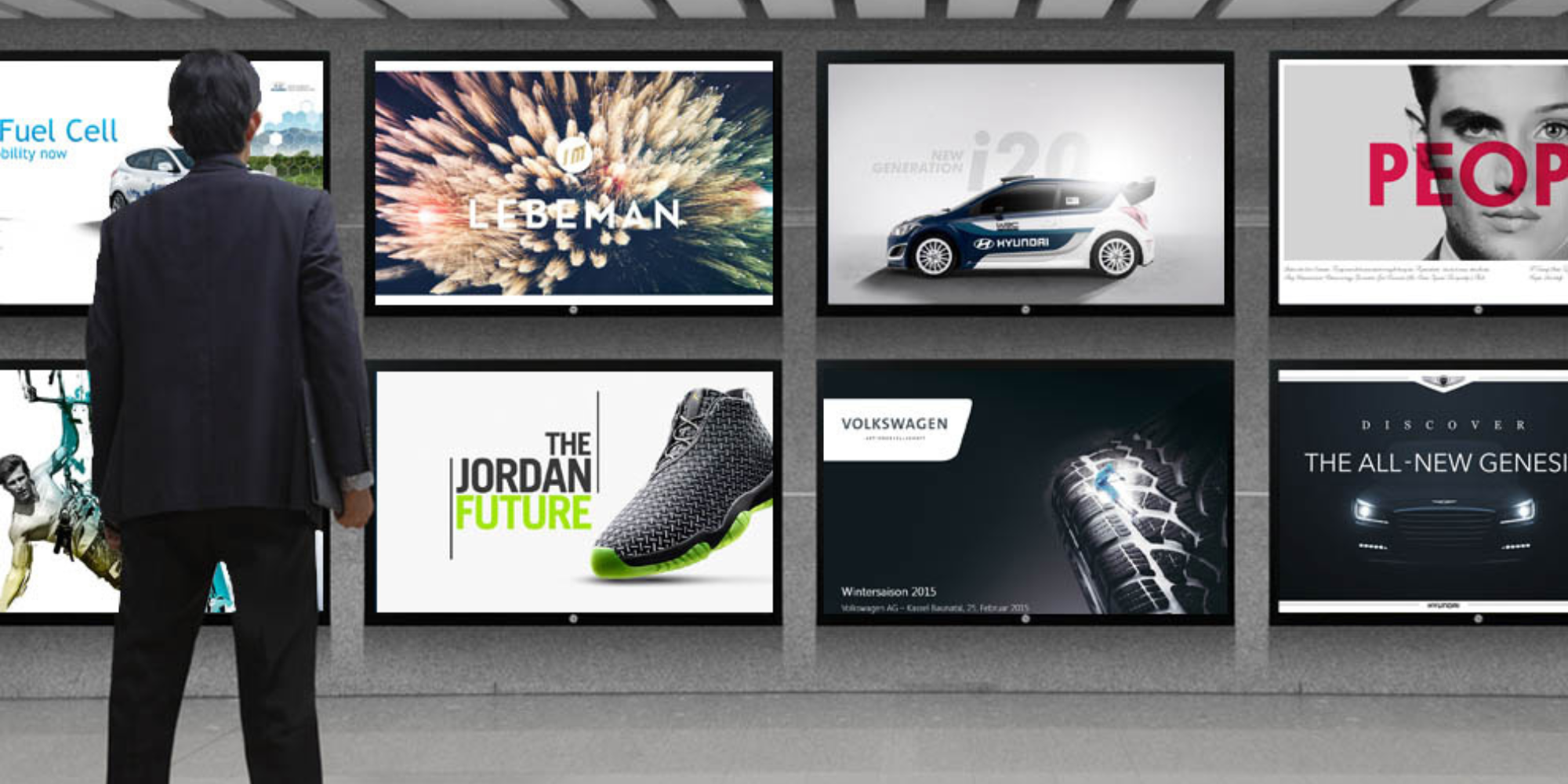
How to Use PowerPoint for Digital Signage
To create stunning, attention-grabbing, and effective digital signage content, you need the help of content creation and presentation tools. One of the most popular is Microsoft PowerPoint, owing to[…]
Read More -
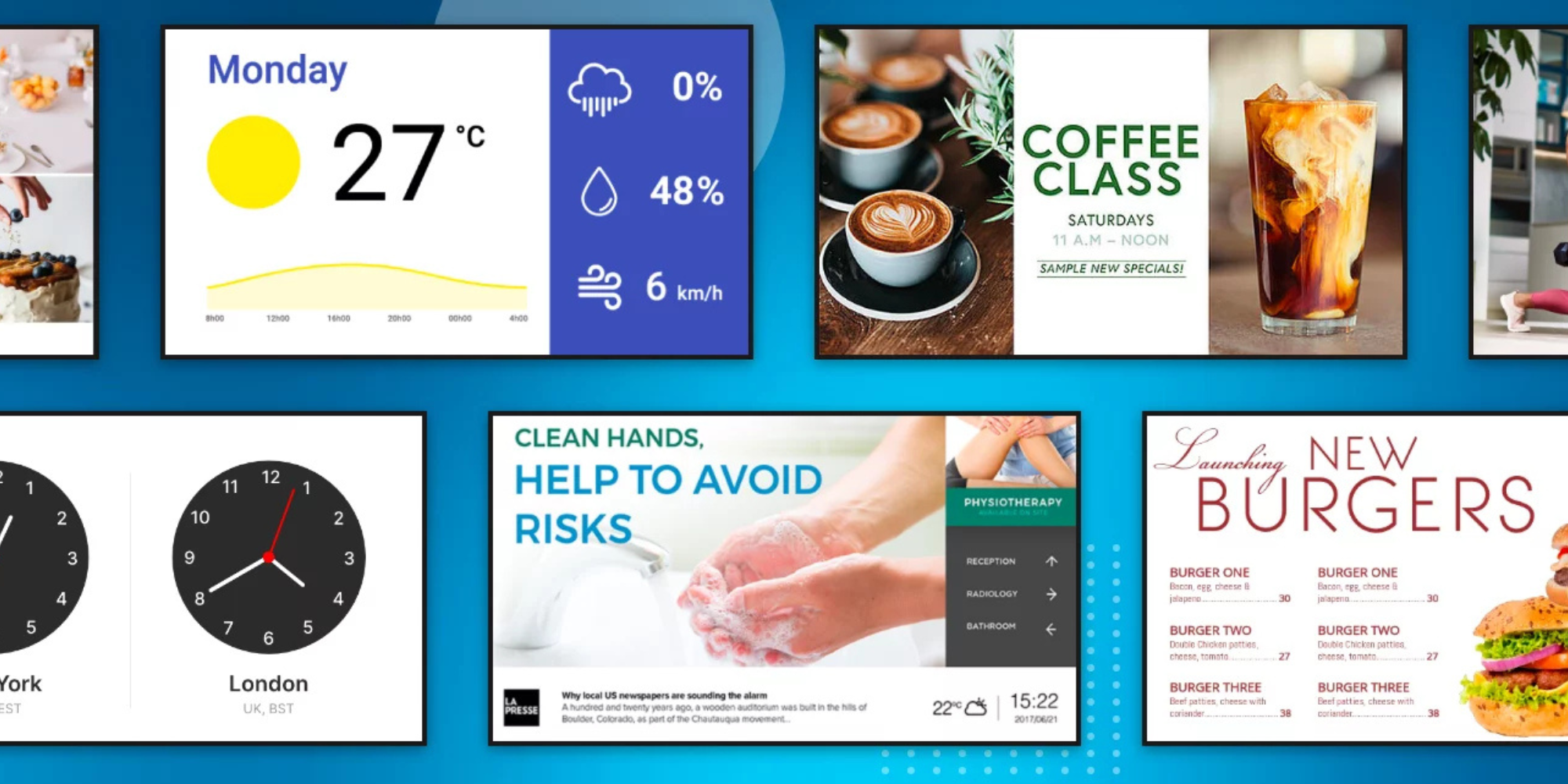
120 Digital Signage Content Ideas
So…. you decided you would invest in some digital signage software and you need some ideas for ways you can make it stand out. This article is your go-to source for the best digital signage content[…]
Read More
Keep Your Displays Interesting – Pick New Templates Every Week!
Every week, we send template recommendations that will make you look great and improve your audience experience. And the best part, they save up to 16 hours of content creation time every week!
12,300+ Organizations Trust Rise Vision, You Can Too
Schedule a Free Demo
You deserve the #1 all-in-one platform for digital signage, screen sharing, and emergency alerts.



































